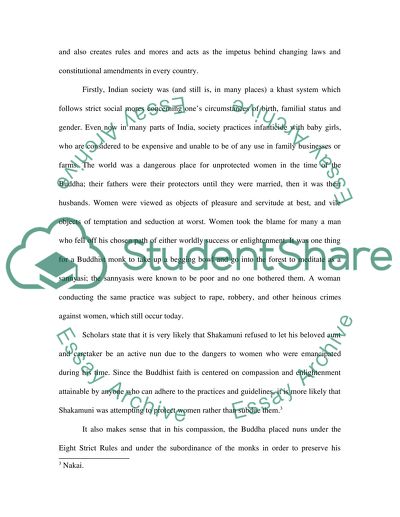Cite this document
(“Women As Buddhists Essay Example | Topics and Well Written Essays - 3250 words”, n.d.)
Women As Buddhists Essay Example | Topics and Well Written Essays - 3250 words. Retrieved from https://studentshare.org/religion-and-theology/1515117-women-as-buddhists
Women As Buddhists Essay Example | Topics and Well Written Essays - 3250 words. Retrieved from https://studentshare.org/religion-and-theology/1515117-women-as-buddhists
(Women As Buddhists Essay Example | Topics and Well Written Essays - 3250 Words)
Women As Buddhists Essay Example | Topics and Well Written Essays - 3250 Words. https://studentshare.org/religion-and-theology/1515117-women-as-buddhists.
Women As Buddhists Essay Example | Topics and Well Written Essays - 3250 Words. https://studentshare.org/religion-and-theology/1515117-women-as-buddhists.
“Women As Buddhists Essay Example | Topics and Well Written Essays - 3250 Words”, n.d. https://studentshare.org/religion-and-theology/1515117-women-as-buddhists.


